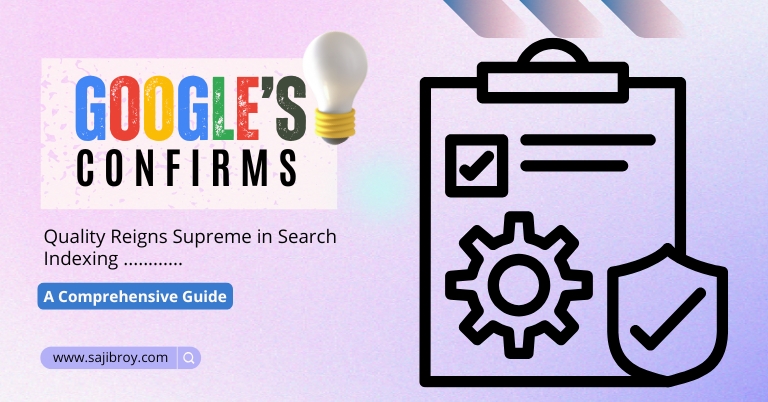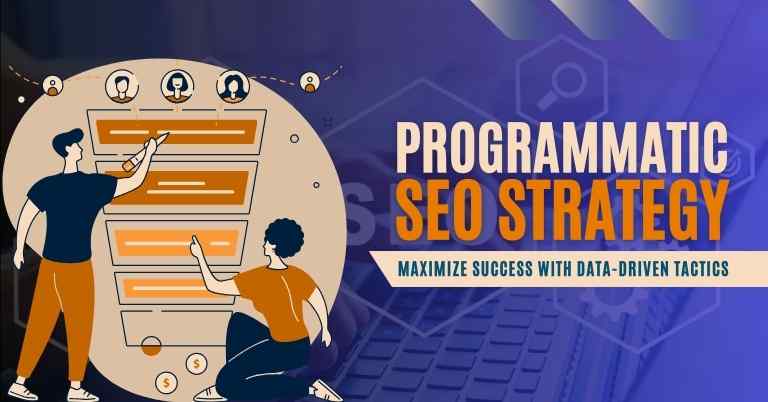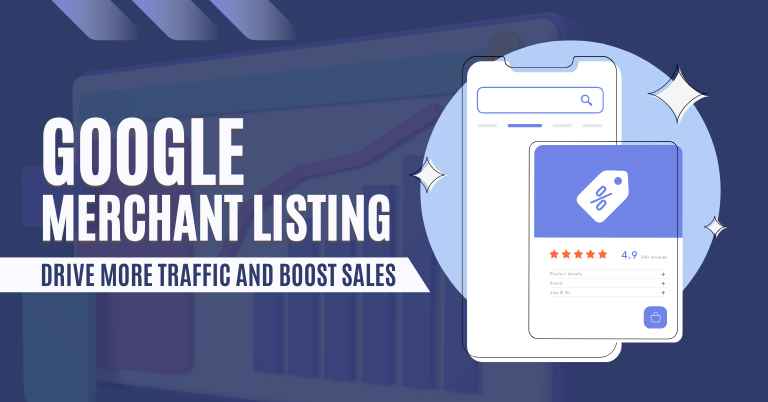To tailor your message to specific groups of customers, analyze their needs and preferences, then customize your content accordingly. Connect with your target audience by understanding their demographics, interests, and pain points, and craft messages that resonate with their unique characteristics.
This way, you can ensure that your marketing efforts effectively engage and convert your customers. Effective communication is the cornerstone of a successful marketing strategy. To reach and engage your customers effectively, you need to tailor your message specifically to their needs, preferences, and characteristics.
Instead of using a one-size-fits-all approach, it is crucial to understand the diverse groups within your customer base and cater to their individual requirements. By doing so, you can create a more personalized and compelling experience for your customers, ultimately leading to higher levels of engagement and conversion. We will explore effective techniques to tailor your message to specific groups of customers and develop a strong connection with your target audience.
Let's See the Topic Overview
Identifying Customer Segments
Tailoring your message to specific customer segments is crucial for successful marketing. By identifying these segments, you can create targeted content that resonates with different groups, ensuring that your message reaches and engages the right audience.
In order to effectively tailor your message to specific groups of customers, it is crucial to first identify the different customer segments within your target market. This will allow you to customize your marketing and messaging strategies to resonate with each specific group.
Here are some key methods to help you identify customer segments:
Conducting Market Research
Market research is a fundamental step in understanding your customers and their preferences. By conducting thorough research, you can gain valuable insights that will assist in identifying customer segments. Here’s how you can conduct market research:
- Perform a SWOT analysis: Assess your business’s strengths, weaknesses, opportunities, and threats to identify areas of improvement and potential target segments.
- Use competitor analysis: Study your competitors’ customer base to identify any gaps that your business can fill.
- Use online tools and platforms: Utilize tools like Google Analytics and social media analytics to gather data on user demographics, interests, and behaviors.
- Study industry trends: Stay updated on the latest trends and changes in your industry to identify emerging customer segments.
Analyzing Demographic Data
Demographic data is an important aspect of identifying customer segments as it provides key insights about your customers’ characteristics. Here are some demographic factors to consider:
- Age range: Determine the age groups that are most likely to be interested in your products or services.
- Gender: Understand the gender distribution within your target market and tailor your messaging accordingly.
- Location: Analyze where your customers are geographically concentrated to target specific regions or locations.
- Income level: Identify the income brackets that align with your product pricing and position yourself accordingly.
Utilizing Customer Surveys
Conducting customer surveys is an effective way to gather direct feedback and opinions from your target audience. Here’s how you can utilize customer surveys to identify customer segments:
- Design survey questions to collect data on customers’ preferences, purchase motivations, and challenges.
- Analyze survey responses to identify common patterns or themes that can be used to create customer segments.
- Consider segmenting customers based on the level of satisfaction they express in the survey.
- Leverage survey responses to tailor your messaging and marketing strategies to each customer segment.
Identifying customer segments is crucial for successful marketing and messaging strategies. By conducting market research, analyzing demographic data, and utilizing customer surveys, you can gain valuable insights to effectively tailor your message to specific groups of customers. This personalized approach will offer a higher chance of attracting and retaining customers within each segment.
Crafting Customer Personas
Tailor your message effectively by crafting customer personas to target specific groups of customers and deliver personalized messages that resonate. Understand their needs, preferences, and behaviors to create compelling content that drives engagement and conversions.
Considering Customer Goals and Pain Points:
- Before tailoring your message to specific groups of customers, it’s essential to understand their goals and pain points.
- Identify what your customers are looking to achieve and what challenges they face.
- By understanding their goals, you can align your message to address their specific needs and aspirations.
- Determine the pain points that prevent your customers from reaching their goals.
- Addressing these pain points in your message will resonate with your customers and offer valuable solutions.
Creating Empathy Maps:
- Empathy maps provide a visual representation of your customers’ thoughts, feelings, and behaviors.
- Use empathy maps to gain insight into your customers’ emotions and motivations.
- Create different empathy maps for each customer group you want to target.
- Consider their desires, fears, frustrations, and values in each empathy map.
- By stepping into your customers’ shoes, you can better understand their mindset and personalize your message effectively.
Segmenting Customers Based on Behavior:
- Segmenting your customers allows you to group them based on specific behaviors and characteristics.
- Analyze your customer data to identify patterns and tendencies.
- Consider factors such as demographics, purchasing behavior, interests, and preferences.
- Develop different customer segments to tailor your message accordingly.
- Each segment should receive a message that resonates with their unique needs and preferences.
Crafting customer personas involves considering customer goals and pain points, creating empathy maps, and segmenting customers based on behavior. By understanding your customers’ needs, emotions, and behaviors, you can deliver targeted messages that truly resonate with them. Take the time to research, analyze data, and develop comprehensive customer personas to elevate your marketing efforts and drive better results.
Tailoring Your Message
Tailoring your message is crucial for effectively reaching specific groups of customers. By understanding their unique needs, preferences, and characteristics, you can create targeted content that resonates with them, leading to better engagement and conversion rates.
To effectively reach and connect with different groups of customers, it’s important to tailor your message to their specific needs and preferences. By understanding different communication channels, building trust and credibility, and implementing personalization strategies, you can create a targeted and impactful message that resonates with your audience.
Understanding Different Communication Channels
It’s crucial to consider the various communication channels available to you when tailoring your message. Each channel has its own strengths and characteristics, and understanding them can help you choose the most effective approach.
- Email marketing: Utilize personalized email campaigns to reach customers directly in their inbox. Use segmentation to send targeted messages based on customer preferences and behavior.
- Social media: Leverage platforms like Facebook, Instagram, and Twitter to connect with your audience on a more personal level. Adapt your communication style and content format to fit the platform and engage with your customers.
- Website content: Craft your website content to address the specific needs and pain points of your target audience. Create landing pages, blog posts, and product descriptions that speak directly to their interests and challenges.
- Live chat support: Offer real-time assistance through live chat on your website. Tailor your responses to each customer’s inquiries and provide personalized recommendations.
- Offline advertising: If your target audience includes demographics that are less likely to be active online, consider traditional advertising methods such as print, radio, or outdoor advertising. Adapt your messaging to fit the medium and the preferences of your offline audience.
Building Trust And Credibility
Establishing trust and credibility is vital to effectively communicate your message to your customers. When customers trust your brand, they are more likely to listen to your message and take the desired action. Here’s how you can build trust and credibility:
- Consistent branding: Ensure that your messaging, visual identity, and tone of voice are consistent across all channels. This consistency reinforces your brand values and builds recognition and trust.
- Customer testimonials and reviews: Highlight positive experiences and testimonials from satisfied customers to showcase your credibility. Encourage customers to leave reviews and ratings on your website and other platforms.
- Expertise and authority: Position yourself as an industry expert by providing valuable content, such as blog posts, tutorials, and case studies. Showcasing your knowledge and expertise can help build credibility in the eyes of your customers.
- Transparent communication: Be open and honest with your customers throughout the buying process. Clearly communicate product information, pricing, and any potential limitations or risks.
Implementing Personalization Strategies
Personalization is key to tailoring your message effectively. By delivering personalized experiences, you can engage customers on a deeper level and increase conversion rates. Here are some strategies to implement personalization:
- Demographic segmentation: Divide your customers into different segments based on demographics such as age, gender, location, or occupation. Craft messages that address their specific needs and interests.
- Behavioral targeting: Analyze customer behavior, such as past purchases, browsing history, or engagement with your brand. Use this data to deliver personalized recommendations and customized offers.
- Dynamic content: Show relevant content based on each customer’s preferences and behavior. This can include personalized product recommendations, tailored landing pages, or customized email offers.
- Personalized messaging: Address customers by their names and tailor your message to their specific interests or concerns. Use personalization tokens in email campaigns to add a personal touch.
By understanding different communication channels, building trust and credibility, and implementing personalization strategies, you can effectively tailor your message to specific groups of customers. Take the time to analyze your audience, experiment with different approaches, and refine your messaging to connect with your customers on a deeper level.
Incorporating Customer Data
Tailoring your message to specific groups of customers is essential for effective marketing. Incorporating customer data allows you to gain insights and personalization, enabling you to provide targeted and relevant content that resonates with each unique segment of your audience.

By utilizing customer data, you can increase engagement, and conversions, and ultimately establish stronger relationships with your customers.
Customer data is a powerful tool that can help businesses tailor their message to specific groups of customers. By gathering and analyzing data, companies can gain valuable insights into their target audience’s preferences, behaviors, and needs. This information can then be used to create personalized marketing messages that resonate with different customer segments.
Here are some effective strategies for incorporating customer data into your messaging:
- Utilizing Customer Relationship Management (CRM) Systems: A CRM system is a valuable tool for managing customer data. It allows businesses to store and organize customer information, track interactions, and analyze data to gain insights. By utilizing CRM systems, businesses can better understand their customers’ preferences, previous purchases, and demographics. This information can then be used to deliver targeted messages that address specific customer needs.
- Leveraging Data Analytics Tools: Data analytics tools provide businesses with the ability to process and analyze large volumes of customer data. These tools can generate valuable insights into the preferences, behaviors, and patterns of different customer segments. By leveraging data analytics tools, businesses can identify trends and patterns that can inform their messaging strategies. For example, analyzing customer data may reveal that a specific group prefers promotional offers over informational content. This insight can then be used to tailor messaging to that particular audience segment.
- Tracking Customer Interactions: Keeping track of customer interactions is crucial for understanding their behaviors and preferences. By monitoring customer interactions across various touchpoints, such as website visits, social media engagements, and email responses, businesses can gain insights into the types of messages that resonate with different customer segments. This data can be used to refine messaging strategies and deliver more personalized content to different customer groups.
Incorporating customer data into your messaging can help you better understand and connect with your target audience. By utilizing CRM systems, leveraging data analytics tools, and tracking customer interactions, you can create tailored messages that speak directly to the needs and preferences of specific customer groups.
Developing Compelling Content
Tailoring your message to specific groups of customers is crucial for developing compelling content. By understanding their needs, preferences, and pain points, you can create targeted and personalized messaging that resonates with your audience, leading to higher engagement, conversions, and brand loyalty.
Aligning Content With Customer Personas
Understanding your target audience is crucial for tailoring your message to specific groups of customers. By creating customer personas, you can identify the key characteristics, needs, and preferences of each group. Here’s how to align your content with customer personas:
- Research and analyze your target audience to identify common traits and behaviors.
- Create detailed customer personas by categorizing your audience based on demographics, interests, and challenges.
- Use these personas as a guideline when crafting your content message to ensure it resonates with each group.
- Tailor your language, tone, and style to match the preferences of each customer persona.
- Identify the pain points and goals of each persona and craft content that addresses their specific needs.
- Incorporate keywords and phrases relevant to each customer persona to improve search engine optimization (SEO).
- Continuously update and refine your customer personas based on feedback, data, and market trends to stay relevant and effective.
Using Storytelling Techniques
Storytelling is a powerful tool for engaging customers and creating a meaningful connection. By using storytelling techniques, you can tailor your message to specific groups of customers effectively. Here’s how to incorporate storytelling into your content:
- Begin with a captivating intro that grabs the reader’s attention and sets the tone for the story.
- Develop relatable characters that represent your customer’ personas and their experiences.
- Use descriptive language and vivid imagery to paint a picture and evoke emotions in the reader.
- Structure your content with a clear beginning, middle, and end to create a cohesive narrative.
- Incorporate real-life examples, case studies, or testimonials to add credibility and authenticity.
- Highlight the benefits and outcomes of your product or service through storytelling.
- Use storytelling to showcase how your offering solves a problem or meets the needs of your target audience.
- Break down complex concepts or ideas into relatable and easy-to-understand narratives.
- Conclude your story with a clear call to action that aligns with your target audience’s goals and desires.
Leveraging Emotional Appeals
Emotional appeals can be a powerful technique for tailoring your message and influencing customer behavior. By understanding the emotional triggers of your target audience, you can create compelling content that resonates with them. Here’s how to leverage emotional appeals effectively:
- Identify the emotions that drive your target audience, such as joy, fear, excitement, or nostalgia.
- Craft content that aligns with these emotions to establish a deeper connection with your customers.
- Use storytelling, personal anecdotes, or relatable scenarios to tap into your audience’s emotions.
- Show empathy and understanding towards the challenges or pain points your customers may face.
- Highlight the benefits or transformation your product or service can provide, evoking positive emotions.
- Utilize powerful and evocative language that triggers emotional responses in your readers.
- Incorporate visuals, such as images or videos, that elicit the desired emotional response.
- Personalize your content by addressing your audience directly and making them feel seen and understood.
- Always ensure that your emotional appeals are genuine, ethical, and aligned with your brand values.
Remember, by aligning your content with customer personas, using storytelling techniques, and leveraging emotional appeals, you can tailor your message to specific groups of customers effectively. Understanding your audience’s needs, preferences, and emotions will allow you to create compelling content that resonates and drives desired actions.
Adopting The Right Tone And Style
Tailoring your message to specific groups of customers requires adopting the right tone and style. By understanding their needs and preferences, you can craft content that resonates with them, building trust and creating a connection. Remember to be authentic, clear, and engaging to effectively communicate your message.
Adapting Communication Styles To Different Segments:
In order to effectively tailor your message to specific groups of customers, it is crucial to adapt your communication styles to match their preferences and characteristics. By understanding the unique needs and behaviors of different customer segments, you can tailor your approach to resonate more deeply with each group.
Here are some key strategies for adapting communication styles:
- Segmentation: Begin by segmenting your customer base into distinct groups based on common traits such as demographics, psychographics, or purchasing behaviors. This segmentation will allow you to identify the specific communication styles that are most suitable for each group.
- Tone and Voice: Adjusting the tone and voice of your message is essential to connect with different customer segments. While some groups may respond better to a professional and formal tone, others may be more receptive to a casual and conversational approach.
- Language and Writing Style: Use language and writing styles that align with the preferences and interests of your target audience. Consider the level of formality, vocabulary choices, and tone that will resonate most with each segment.
- Visual Elements: Visual elements such as images, graphics, and videos can also contribute to effective communication. Tailor visual content to match the preferences and interests of your target audience.
Using Language That Resonates With The Target Audience:
Crafting messages that resonate with your target audience requires using language that speaks directly to their desires, challenges, and aspirations. By understanding your audience’s needs and motivations, you can choose words and phrases that draw them in and create a connection.
Here are some tips for using language that resonates with your target audience:
- Research and Analyze: Conduct thorough research to gain insights into the language your target audience uses. Study their online conversations, customer reviews, and competitor analysis to identify key phrases and expressions.
- Speak Their Language: Adopt the vocabulary and terminology that your target audience is familiar with. Use words and phrases that align with their interests and industry jargon to build rapport and credibility.
- Address Pain Points and Benefits: Focus on addressing the pain points and challenges your target audience faces. Highlight how your product or service can provide solutions and deliver the desired benefits.
- Use Emotional Triggers: Tap into the emotions of your audience by using words that evoke certain feelings. Emphasize the positive emotions associated with your product or service, such as joy, excitement, or relief.
Avoiding Jargon And Complex Terminology:
To effectively communicate with different groups of customers, it is essential to avoid using jargon and complex terminology. Simplifying your message will ensure that it is easily understood by a broader audience. Here are some key points to consider when avoiding jargon and complex terminology:
- Know Your Audience: Understand the level of familiarity your audience has with your industry. Tailor your language accordingly, using terms that your audience will be familiar with.
- Explain Complex Concepts: If there are unavoidable complex terms or concepts, provide clear and concise explanations. Use simple language and analogies to help your audience grasp the meaning.
- Focus on Clarity: Prioritize clarity and simplicity in your communication. Avoid convoluted sentences or excessive technical details that may confuse or alienate your audience.
- Use Plain Language: Opt for plain language that is free from unnecessary jargon or buzzwords. Aim for clear and straightforward communication that anyone can understand.
By adopting the right tone and style, using language that resonates with your target audience, and avoiding jargon and complex terminology, you can effectively tailor your message to specific groups of customers. This personalized approach will help you connect with your audience on a deeper level and increase the likelihood of achieving your marketing objectives.
Testing And Optimization
Tailoring your message to specific groups of customers is essential for effective marketing. Testing and optimization allow you to understand your audience better, enabling you to deliver personalized messages that resonate with their needs and preferences. By using data-driven insights, you can refine your messaging strategy and achieve better results in your marketing campaigns.
Tailoring your message to specific groups of customers is a crucial aspect of effective marketing. By understanding the unique needs and preferences of different customer segments, you can create messages that resonate and drive conversions. One way to optimize your message is through testing and optimization.
In this section, we will explore how A/B testing, analyzing conversion rates, and making iterative improvements can help you refine your marketing messages and maximize your results.
A/B Testing Message Variations:
- Conduct A/B tests by creating different variations of your marketing message and comparing their performance.
- Test various elements of your message, such as headlines, images, calls to action, or even the tone and language used.
- Divide your target audience into two groups and expose each group to a different variation of your message.
- Measure the response rates, click-through rates, or conversion rates of each variation to determine which one performs better.
- Use A/B testing tools or platforms to automate the process and gain valuable insights into the effectiveness of different message variations.
Analyzing Conversion Rates:
- Monitor and analyze the conversion rates of your different message variations to identify patterns and trends.
- Track important metrics, such as the number of leads generated, purchases made, or sign-ups completed.
- Segment your data by different customer groups to understand how each segment responds to your messages.
- Identify which variations perform well and are more effective in driving conversions.
- Use web analytics tools to gather and analyze data, providing insights into customer behavior and preferences.
Making Iterative Improvements:
- Continuously refine your marketing message based on the insights gained from A/B testing and conversion rate analysis.
- Implement the learnings from successful variations into your future messaging strategies.
- Experiment with different combinations of message elements to find the most effective formula.
- Iterate and optimize your messaging approach based on the feedback and responses from your target audience.
- Stay up-to-date with market trends and changes in customer preferences to ensure your message remains relevant and impactful.
Remember, testing and optimization are ongoing processes. By regularly refining your message, you can ensure it connects with your customers and compels them to take action. Use the insights gained from A/B testing, conversion rate analysis, and iterative improvements to continuously optimize your marketing messages for each specific group of customers.
Conclusion
Effective communication is key to any successful marketing strategy. Tailoring your message to specific groups of customers allows you to connect on a deeper level and build lasting relationships. By understanding your target audience and their unique needs, you can create content that speaks directly to them.
Start by conducting thorough research and segmentation to identify different customer personas. Then, use this knowledge to craft personalized messages that resonate with each group. Consider factors such as language, tone, and concerns to ensure your message is relatable and relevant.
Implementing this tailored approach will increase customer engagement, and brand loyalty, and ultimately, drive more conversions. Remember, consistently monitoring and analyzing customer feedback will help you to refine your messaging further and stay ahead of their evolving needs. By following these strategies, you’ll position your brand as a trusted partner and achieve long-term success in your marketing efforts.












